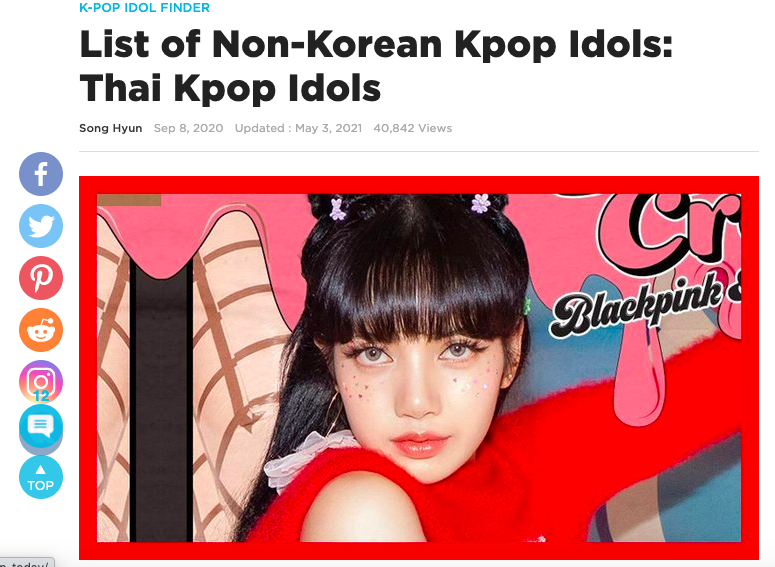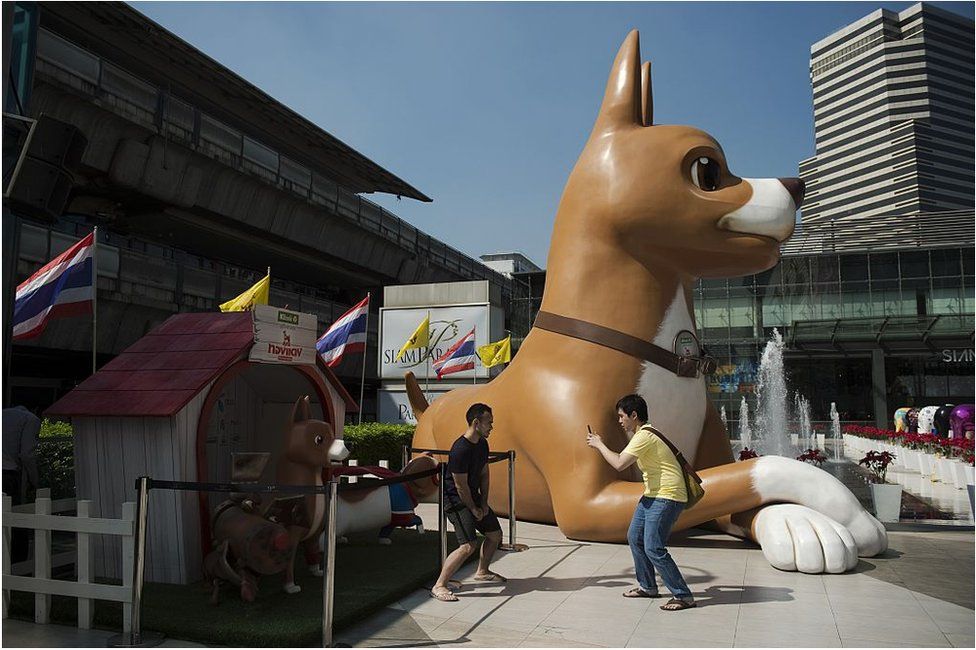In this article, we will explore pop culture and popular social media trends in Thailand. We know that you’re eager to find out how to make your audience love your content and express their interest through greater engagement.
Your following stands at the core of your success when creating a campaign. Understanding your audiences and their needs will guarantee your best performance. It means that you can’t just jump on the bandwagon each time a trend is blowing up. Think about it and ask yourself, ‘Is your audience going to respond well to this particular trend?’
Digital Business Lab partnered with Dr. Crystal Abidin (Ph.D. in Anthropology & Sociology, and Media Studies) and conducted detailed research in Singapore, Indonesia, Vietnam, and Thailand to elevate our knowledge and run the best campaigns for our clients. Dr. Crystal Abidin specializes in influencer cultures, online visibility, and social media pop culture, especially in the Asia Pacific region.
1. Pop culture
- The Korean wave and Kpop are viral social media in Thailand (Statista Research Department 2020). The Korean government and notable Korean brands have facilitated the growth of the Korean wave, which has attempted to establish its own “Thai wave.” (Potipan & Worrawutteerakul n.d.)
- South Korean tabloids (Koreaboo) and popular South Korean forums (allkpop) often report that Thai idols are the only Southeast Asians to have succeeded in the Kpop industry, with recent famous exports including Lisa of BlackPink, BamBam of GOT7, Nichkhun of 2PM, and Ten of NCT (SBS PopAsia HQ)
- As a result, Korean products such as automobiles and mobile phones sell incredibly well in the Thailand consumer market (Chongkittavorn 2019)

Example of the viral listicles featuring Thai nationals succeeding in Kpop
Illustration of DEKSORKRAO video parodying a Shopee advertisement by BlackPink (DEKSORKRAO 2019)
- Japanese “Boys Love” manga and queer media have also recently become popular in Thailand. As a result, it even spun off a new glocal hybrid of Thai Boy Love (Baudinette 2019)
- Throughout the 13 airing weeks of Thailand’s most popular Boys Love drama, the #2gethertheSeries hashtag topped the global trends on Twitter—the most favored social media of Boys Love fans—and triggered millions of virtual conversations about the series various languages, from Thai, Chinese to English.

Example: 2gether: The Series, Thailand’s most popular Boys Love drama.
💡 Takeaway: Leveraging pop culture in your communication humanizes your company or brand’s image. In addition, it catches eyeballs effortlessly while resonating with your audience.
2. Humour
- Humour and jokes are a common element of everyday conversation to make interactions light-hearted and to shield sadness when discussing complex issues (Cultural Atlas 2020)
- The role of humor is also evident in television advertising, where it is important to consider the relationships between product type and marketers’ use of humor to communicate brand information. This cultural context is especially crucial because “Western business theory” American-style humor and advertising strategies may not always apply in other markets (Alden et al.)
- The Thais are very much visual-driven, and entertainment value is significant to them. This could again be traced back to their attitude towards “Sanuk” (fun). They believe that a bit of playfulness would spice up dull activities, even in the aspect of work.

Example: Fun Line stickers
Example: A campaign film for Siam Commercial Bank about the difficulties with getting funding for online businesses. The campaign is pitching SME loans that only take a few minutes for approval with a competitive interest rate. The four-minute spot revolves around a small business owner trying to get his “Fish Flop” business off the ground
💡 Takeaway: When it comes to communication, it is important to get to the point. In 2021, your audience doesn’t have the time to read or consume a lengthy piece of content.
Keep content straight to the point and make it entertaining:
- Even informal businesses like banking want to communicate by being direct and straightforward. Yet don’t forget to incorporate a fun or interesting aspect to the content. It will make it memorable, and the audiences are more likely to share it or come back to it.
- Remember – Instagram, TikTok, and the rest of the platforms are visual-based. So, when you are thinking about content, skip on the text most of the time, and create something which grabs the user’s attention in the first few seconds.
- Another important aspect is to create your campaign by revolving around the beliefs of “Sabia Sabai” and “Mai pen rai” (Don’t worry, be happy). By doing so, you will encourage your audience to engage more and share the content with friends and family.
- Suggestion for a caption for popular social media in Thailand: try with jokes about Thailand puns!
3. Small talk for business
- Small talk is an important lubricant preceding any formal business conversation, and it is considered rude to dive straight into a formal business. (Cultural Atlas 2020)
- Whether it’s making our bellies hurt from laughing so hard or leaving us unable to control our tears, the Thai advertisements always manage to hit the feels.
For instance, this “Unsung Hero” ad by Thai Life Insurance went viral and has been viewed more than 71 million times on YouTube, and for a good reason! It tells the story of a man making small acts of kindness to the people around him. After some time, his contributions eventually made a difference.
💡 Takeaway: It is important to note that small talk on social media in Thailand is popular and works for viral marketing. Even in business-oriented fields. Your audience will soon get tired of posts that only focus on statistics, facts, and numbers. They need a little bit of variety. So, incorporating essentially any subject before diving into the serious stuff is a proven way to maximize your engagement.
4. Collectivist culture
- 75% of television ads studied by a team of academics were found to contain three or more characters, compared to only 25% in Germany and the USA (Gulas & Weinberger)
💡 Takeaway: Family and friends are important, and brands should use this aspect on social media to resonate with Thai audiences. That is why ads featuring more people, who appear to be friends and family, make the viewer feel included and result in the person relating more to the content.
5. Social media as makeshift shops
- E-commerce is growing fast, especially informal commerce – such as social media accounts that are makeshift shops.
- Rising incomes generate optimism in the population and increase consumer demand for a wide variety of products.
- Consumers tend to indulge and make impulse purchases instead of saving their money, typically seen in other Southeast Asian countries.
💡 Takeaway: The “shop” feature is so important these days on social media. The truth is that a user is more likely to purchase if they see a “call to action.” Redirect them towards the “shop button” on your social media page for a greater chance of an impulse purchase. Be responsive to direct messages.
6. Vibrant market of micro-influencers
The high usage of social media and increasing trust in “friends” over traditional advertising has given rise to a vibrant industry of micro-influencers. Thailand has no lack of micro-influencers across different topics like food, lifestyle, travel, fashion, parenting, and many of these micro-influencers are still under the radar of big brands.
View this post on Instagram
View this post on Instagram
💡 Takeaway: In Thailand, celebrities may be viewed as “idols” by the population. They flaunt these extravagant lifestyles, and the audience doesn’t relate. Instead, the micro-influencers are far more relatable towards their audience. They give off a far more powerful sense of trust when advertising a product. Working with micro-influencers is more cost-effective and ultimately more beneficial to your brand.
7. Sensitive issues
- In 1939, the country changed its name from Siam to Thailand to symbolize “the Free Land.” This notion of freedom stems from Thailand’s colonial legacies and has conditioned its citizens to value “personal expression, speech, and religion.” (Cultural Atlas 2020)
- However, stiff laws limit how much Thais are allowed to “criticize or insult” the royal family/monarch and Buddhism. (Cultural Atlas 2020)
- The monarch is assigned utmost reverence in Thailand, and behavior disrespecting the King and the royal family is deemed taboo, defamatory, or even illegal. (Cultural Atlas 2020)

Example: Defaming a dog: The ways to get arrested for lese-majeste in Thailand
💡 Takeaway: Even though we all are entitled to freedom of speech, we should avoid some subjects on social media, especially in Thailand. Ultimately, these can tarnish your brand’s reputation, and eventually, your audience will lose interest. Pay attention to what type of information you are communicating through your posts. Always think twice before any piece of content goes live.
Explore articles 1 & 2 of this series:
- ① Cultural social media insights in Thailand [ Research ]
- ② Social Media Penetration in Thailand [Research]
Explore our other Market Research in Asia:
🇸🇬 Singapore Social Media Insights:
- ① Cultural social media insights in Singapore [ Research ]
- ② Social media marketing in Singapore [ Research ]
- ③ Online marketing in Singapore [ Research ]
🇻🇳 Vietnam Social Media Insights:
- ① Cultural social media insights in Vietnam [Research]
- ② Social Media Penetration in Vietnam [ Research ]
- ③ The popular Social Media in Vietnam [ Research ]
🇮🇩 Indonesia Social Media Insights:
- ① Cultural social media insights in Indonesia [Research]
- ② Social Media Penetration in Indonesia [Research]


